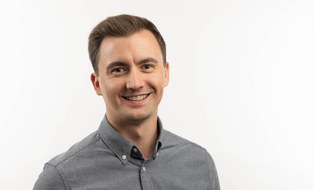RescueFLY
Project Information
- Client: Federal Ministry of Transport and Digital Infrastructure
- Duration: 24 months, January 2022 - March 2024
- http://www.rescuefly.org
Involved Partners
- Björn Steiger Stiftung
- Brandenburgisches Institut für Gesellschaft und Sicherheit
- Brandenburgische Technische Universität Cottbus-Senftenberg
- Technische Universität Chemnitz
- THOLEG Civil Protection Systems
- DRONIQ
Objectives
According to WHO, drowning is the third leading (7%) cause of unintentional injury-related deaths worldwide. The DLRG annual report shows that in 2020, about 88% of all victims drowned in inland waters. Alerting and locating in-water emergencies impose particular challenges on the rescue chain. With the help of UAS ("Unmanned Aircraft Systems"), people in distress can usually be detected more quickly, and rescue resources are sent more rapidly than by helicopters, boats, or lifeguards. The precise dropping of aid is also a possibility to significantly extend the chance of survival until the arrival of the rescue services. Water rescue utilizing drone support thus becomes a valuable component of the rescue chain.
The RescueFLY project intends to develop and deploy drones stationed decentrally - in modern and technically advanced drone garages - that are connected online to a central rescue center and equipped with adequate sensor technology to support water rescue in areas that are difficult to access and cover large areas. An exemplary area of application is the Lusatian lake landscape, especially the lakes Geierswalder See and Partwitzer See, which are located in the state of Brandenburg and Saxony.
The use of advanced and networked drone garages and additional alerting and AI elements for image recognition and flight mission optimization will be simulated in a virtual environment to analyze and optimize drone garage location and drone flight trajectories to mission spots. RescueFLY is intended to shorten the time for water rescue by locating casualties on the water surface with the help of the autonomous drone, dropping floats if necessary, and navigating rescue forces to the casualty.
During the project the following results were published:
- Braßel, H., Zeh, T., Fricke, H., Eltner, A. (2023) Optimal UAV Hangar Locations for Emergency Services Considering Restricted Areas, MDPI Drones 2023, 7(3), 203; https://doi.org/10.3390/drones7030203
- Braßel, H., Zeh, T., Fricke, H. (2022): Fast and robust optimization of unmanned aerial vehicle locations considering restricted areas, Deutscher Luft- und Raumfahrtkongress (DLRK 2022), Dresden
Completed work:
In progress:
Contact
 © Sven Ellger
© Sven Ellger
Research Associate
NameDr.-Ing. Hannes Braßel
Send encrypted email via the SecureMail portal (for TUD external users only).
Chair of Air Transport Technology and Logistics
Visiting address:
Gerhart-Potthoff-Bau (POT), Room 166 Hettnerstraße 1-3
01069 Dresden
 © Sven Ellger
© Sven Ellger
Research Associate
NameDipl.-Ing. Thomas Zeh
Send encrypted email via the SecureMail portal (for TUD external users only).
Chair of Air Transport Technology and Logistics
Visiting address:
Gerhart-Potthoff-Bau (POT), Room 167 Hettnerstraße 1-3
01069 Dresden


